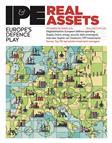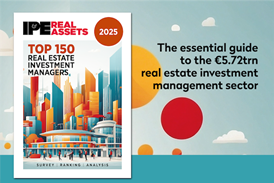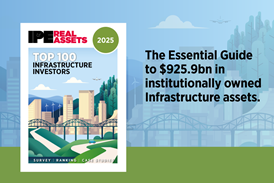Oxford Economics has revised down its outlook for European commercial property following the introduction of trade tariffs by the US government.
The economics advisory firm has trimmed its all-property capital growth forecast by 50bps to 1.5% pa over 2025-2026
In a research briefing, associate director Mark Unsworth wrote: “We expect slower demand to hit rental growth and persistent uncertainty to lead to a flatter yield profile.”
Forecasts for the industrial sector have been adjusted the most on the expectation that tariffs will have negative effect on European manufacturing and exports. “As countries export less to the US, they will almost certainly also import less from other trading partners creating a negative chain reaction,” the report said.
Oxford Economics expects industrial markets in Central and Eastern Europe, Germany and other small open economies, such as the Netherlands and the Nordics, to be most affected.

“Many of these markets either have a sizeable direct trade exposure to the US, are key logistics nodes, or are integrated into supply-chains that serve the US,” the report said.
Unsworth said: “It’s worth noting that, although we have downgraded our industrial forecast more than other sectors, it is still expected to be one of the best performing sectors overall, second only to residential.
“It also supports our view that investors will refocus on portfolio diversification to reduce risk, gradually rebalancing away from heavily overweighted sectors during a period of heightened uncertainty.”
The effect on office and residential sectors is expected to be more muted with “less downside from the tariffs for capital growth in these sectors unless there is a large shock to unemployment or services trade becomes part of the retaliation measures”, the report said.
“The direct and indirect effects of tariffs, consumer and business uncertainty, and the financial market re-pricing of risk are all playing a large role in shaping our outlook, while the range of potential outcomes is wide.”
Global logistics real estate giant Prologis recently decided against raising its 2025 outlook, as originally intended, due to customers delaying leasing decisions over trade uncertainty.
CEO Hamid Moghadam told analysts on a recent earnings call: “There are two things going on. One, there’s pressure on rents, obviously. And second, I don’t know where the 10-year [Treasury yield] is going to go, and cap rates are kind of correlated with that. So I think most people in this environment are going to wait and see for some clarity.
“But depending on how bad this thing gets, it could be six months, maybe nine months before you start seeing some opportunities. And let’s not speculate about how bad it’s going to get or whether this is going to be a blip. I don’t know. I mean it changes every day.”
“Brexit provides a case study here – when supply chains had to be reconfigured”
David Inskip
David Inskip, EMEA head of research within CBRE Investment Management’s insights and intelligence team, said he expected tariffs to “cause a slowdown in global economic growth this year”, but he said it was less clear what the impact would be on European logistics real estate.
He said: “According to tariffs as they stand today, we expect the impact on the European economy to be less pronounced than in some other parts of the world. We will also see the impact cushioned by the increased spending intentions of European governments, albeit this support may not materialise until 2026.”
But the impact on logistics real estate ”is still very hard to interpret”, Inskip added. “We anticipate that demand will slow in the near-term as the current uncertainty hinders occupier decision making. Longer-term though, it is not clear that there must be a negative occupation impact.
“It is possible that a world in which trade is more fragmented could require more warehouse space. Brexit provides a case study here – when supply chains had to be reconfigured separately for the UK and continental Europe, this led to higher inventory requirements.”
To read the latest IPE Real Assets magazine click here.























